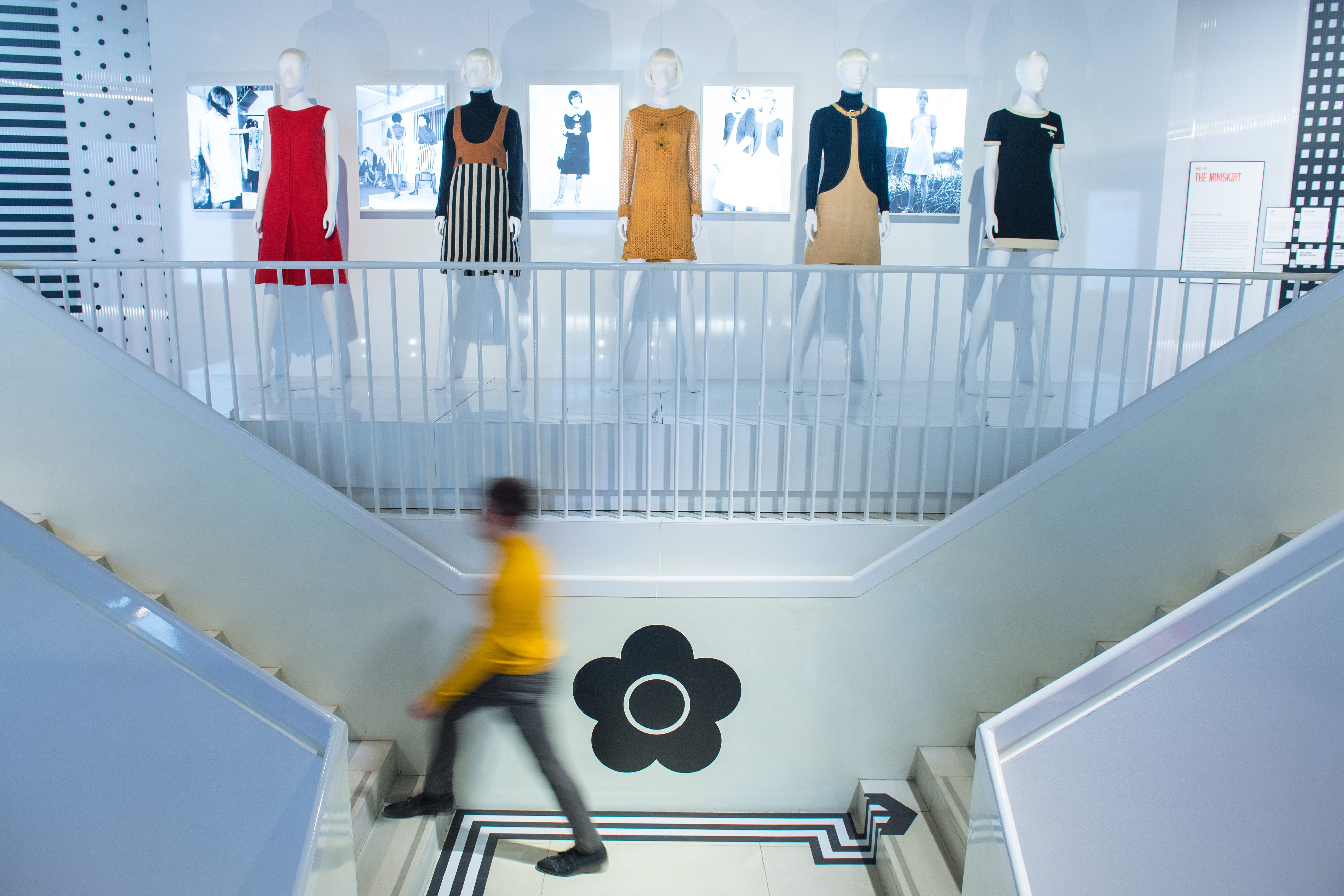Dame Mary Quant was a ‘modern influencer before her time’, curator says
Jenny Lister curated the V&A’s blockbuster exhibition dedicated to the late designer.

Your support helps us to tell the story
From reproductive rights to climate change to Big Tech, The Independent is on the ground when the story is developing. Whether it's investigating the financials of Elon Musk's pro-Trump PAC or producing our latest documentary, 'The A Word', which shines a light on the American women fighting for reproductive rights, we know how important it is to parse out the facts from the messaging.
At such a critical moment in US history, we need reporters on the ground. Your donation allows us to keep sending journalists to speak to both sides of the story.
The Independent is trusted by Americans across the entire political spectrum. And unlike many other quality news outlets, we choose not to lock Americans out of our reporting and analysis with paywalls. We believe quality journalism should be available to everyone, paid for by those who can afford it.
Your support makes all the difference.The curator of the V&A’s Dame Mary Quant exhibition said the designer, who has died aged 93, was a “modern influencer before her time”.
Jenny Lister curated a 2019-2020 exhibition, dedicated to Dame Mary’s life and style, with more than 200 garments on show.
It explored her impact on fashion and has been cited as one of the V&A’s most popular fashion exhibitions, with the museum saying in 2020 the display had been visited 400,000 times.
Ms Lister says Dame Mary’s personality played a major part in her success.
Dame Mary set up her first shop, Bazaar, on the King’s Road in London’s Chelsea in 1955, which started as a “small, amateurish enterprise, really taking advantage of the urban renewal that was going on in the post-war time in Britain”, Ms Lister told the PA news agency.
“It grew from there, with customers walking by, seeing things in windows they wanted. And they also wanted to look like Mary herself.”
This coincided with “media changes that happened in the late ’50s and ’60s”, she said.
“Fashion became such a widely consumed subject and, I think, because she was so photogenic as well, journalists were fascinated both by her looks and what she had to say and I think it’s really down to her wearing the looks that mean she had this incredible impact on fashion.”
Ms Lister called Dame Mary “a modern influencer before her time”, adding: “It was almost like a movement people wanted to follow.”
While there were earlier celebrity designers like Coco Chanel and Elsa Schiaparelli, Ms Lister said: “Their prices were so much more unattainable for most people.
“I think because (Dame Mary) wanted her things to be affordable … it meant you didn’t really have to spend a lot of money to identify with her and her brand.”
Despite an exuberant public image, Ms Lister said Dame Mary “was really shy, which is so surprising when you consider all the press interest she had and how often she was followed by media”.
She said: “Family and friends have told me so often they had to drag her out to award ceremonies and to talk in large groups of people, which I found really surprising because when you watch her do interviews back in the ’60s, she’s incredibly good at communicating her ideas.
“And I think (that’s why) a lot of people connected with her.”
Dame Mary played a big part in changing the face of fashion in the 1960s, making it more youthful and accessible, which coincided with major social changes for women, particularly in areas of education and healthcare.
“Mary Quant said herself she felt clothes and fashion should be like a tool for competing in everyday life,” Ms Lister said.
“So you didn’t have to think about your clothes, they just worked for you.”
This meant a move away from the hourglass silhouettes and high heels of the 1950s.
“She wanted people to have flat shoes so they could run for the bus and also look good to go to work and to go out after work as well,” Ms Lister said.
“Her clothes were definitely more functional in that way, but also so fun and vibrant and decorative as well.”
Ms Lister said Dame Mary will be remembered predominantly for popularising the mini skirt, but she prefers to reflect upon another achievement: the daisy logo, which became a symbol of her brand.
“It was really clever and stylish and minimal – and yet it said so much and conveyed her attitude to life,” Ms Lister said.
“You can definitely see that it was decades ahead of the time, when you think we look at these little logos on our phones for apps and things and they all represent something.
“(The daisy logo) represents so much, so I think that was really incredibly ahead of her time.”
Subscribe to Independent Premium to bookmark this article
Want to bookmark your favourite articles and stories to read or reference later? Start your Independent Premium subscription today.